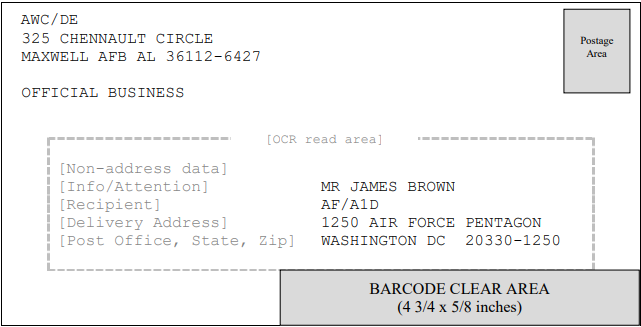22.2: Envelope Anatomy
- Page ID
- 180482
\( \newcommand{\vecs}[1]{\overset { \scriptstyle \rightharpoonup} {\mathbf{#1}} } \)
\( \newcommand{\vecd}[1]{\overset{-\!-\!\rightharpoonup}{\vphantom{a}\smash {#1}}} \)
\( \newcommand{\id}{\mathrm{id}}\) \( \newcommand{\Span}{\mathrm{span}}\)
( \newcommand{\kernel}{\mathrm{null}\,}\) \( \newcommand{\range}{\mathrm{range}\,}\)
\( \newcommand{\RealPart}{\mathrm{Re}}\) \( \newcommand{\ImaginaryPart}{\mathrm{Im}}\)
\( \newcommand{\Argument}{\mathrm{Arg}}\) \( \newcommand{\norm}[1]{\| #1 \|}\)
\( \newcommand{\inner}[2]{\langle #1, #2 \rangle}\)
\( \newcommand{\Span}{\mathrm{span}}\)
\( \newcommand{\id}{\mathrm{id}}\)
\( \newcommand{\Span}{\mathrm{span}}\)
\( \newcommand{\kernel}{\mathrm{null}\,}\)
\( \newcommand{\range}{\mathrm{range}\,}\)
\( \newcommand{\RealPart}{\mathrm{Re}}\)
\( \newcommand{\ImaginaryPart}{\mathrm{Im}}\)
\( \newcommand{\Argument}{\mathrm{Arg}}\)
\( \newcommand{\norm}[1]{\| #1 \|}\)
\( \newcommand{\inner}[2]{\langle #1, #2 \rangle}\)
\( \newcommand{\Span}{\mathrm{span}}\) \( \newcommand{\AA}{\unicode[.8,0]{x212B}}\)
\( \newcommand{\vectorA}[1]{\vec{#1}} % arrow\)
\( \newcommand{\vectorAt}[1]{\vec{\text{#1}}} % arrow\)
\( \newcommand{\vectorB}[1]{\overset { \scriptstyle \rightharpoonup} {\mathbf{#1}} } \)
\( \newcommand{\vectorC}[1]{\textbf{#1}} \)
\( \newcommand{\vectorD}[1]{\overrightarrow{#1}} \)
\( \newcommand{\vectorDt}[1]{\overrightarrow{\text{#1}}} \)
\( \newcommand{\vectE}[1]{\overset{-\!-\!\rightharpoonup}{\vphantom{a}\smash{\mathbf {#1}}}} \)
\( \newcommand{\vecs}[1]{\overset { \scriptstyle \rightharpoonup} {\mathbf{#1}} } \)
\( \newcommand{\vecd}[1]{\overset{-\!-\!\rightharpoonup}{\vphantom{a}\smash {#1}}} \)
The Post Office designates four areas on the face of an envelope for specific purposes. These areas include the return address area; the postage area; the optical character reader (OCR) read area; and the barcode clear area as shown in the diagram below.
USPS Publication 28, Annex 1, Section A1, Envelope Illustration

Figure \(22.2.1\)
Envelope Anatomy Details
- The return address area is in the upper left corner of the envelope. The return address is aligned on the left approximately \(1 / 8\) inch from the left edge of the envelope and approximately \(1 / 8\) inch down from the top of the envelope.
- The postage area is in the upper right corner of the envelope (ensure the correspondence has sufficient postage, if required, before mailing).
- The OCR read area covers the majority of the center of the envelope. The OCR read area is a rectangle with the base \(5 / 8\) inch from the bottom of the envelope and extending upwards to \(23 / 4\) inches from the bottom with \(1 / 2\) inch margins from each side. The entire address must be contained within the OCR read area.
- The barcode clear area is in the lower right corner. It extends from the lower right corner of the envelope upwards \(5 / 8\) inch with a width of \(43 / 4\) inches.
The envelope should contain only the information needed in the areas reserved for each purpose without printed or stamped markings of slogans or designs. This also applies to mailing labels, post cards and self-mailers. An example envelope is provided in the diagram below.
Air Force Correspondence Envelope Illustration

Figure \(22.2.2.\)

